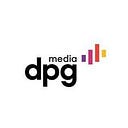Written by Simon Harris - Director Publisher Trading Desk DPG Media
Since Apple introduced Intelligent Tracking Prevention (ITP) three years ago to its Safari web browser the advertising industries ability to track, segment internet users across the open web & deliver online advertising campaigns to them has been radically altered. Simple tasks like ensuring someone doesn’t see the same advert ad infinitum is now very difficult, as is deterministically tracking whether an advert served resulted in a sale.
This has been incredibly disruptive for both advertisers & their agency partners but it is publishers who have been most adversely impacted, losing as much as 70% of their revenue when the person visiting their website is using Safari because advertisers value the ability to segment, deliver and measure using cookies so greatly.
Just as third party cookies can be considered the backbone of addressable advertising on the open internet, Device IDs are the foundations of addressability for in App Advertising. On Apple handsets this ID this identifier is called Identifier for Advertisers (or IDFA) & just as Apple built the first major browser to incorporate privacy protection for its users, they plan to be the first major mobile OS to bring enhanced privacy to users of Apps on Apple devices through the App Tracking Transparency Framework which will control the use of device & other user identifiers such as email.
ITP Comes To Apps
This June at their WorldWide Developers Conference (WWDC) Apple announced that when the next release of iOS arrived in the Autumn it would have ITP like features for Apps, it was called the App Tracking Transparency (ATT) framework. After almost a year of waiting ATT launched in iOS 14.5 on April 26th 2021.
Unlike ITP & the open web rather than blocking tracking in Apps by default, Apple are mandating App publishers & developers ask for permission to collect & share data with third parties through a consent modal that appears when the user first opens the App. This news was not well received & to a degree the dark mood of App developers & publishers was understandable, in 2019 Apple estimated that their App Ecosystem supported In-App advertising sales of $45 billion. Just as ITP devastated the yields of publishers offering news which was free at the point of access, the ATT Framework has the potential to do the same for App developers.
Many (most notably Facebook) have complained about the broad scope of the ATT Framework & its potential impact on businesses. Complaints aside publishers now require an opt in to do any of the following:
- To use an SDK in their App that combines user data from their App with that of others to target advertising or measure its effectiveness.
- To share IDFAs & email addresses etc with a third-party advertising network, either for targeting or measurement purposes.
- To share email lists with a data broker unless the data solely used for fraud prevention.
The ATT Framework is not only broad reaching in terms of the use cases that an App developer or publisher requires consent for, but also the number of the platforms impacted, beyond iOS 14.5 it will be deployed in iPadOS and tvOS.
Implementing the ATT
As we mentioned above the ATT Consent Modal needs to be shown when a user first logs in to the app. Once a user consents to data sharing, the App can continue to track their users & share this information with third parties.
Not blocking all tracking by default is a welcome compromise & one that Apple likely made because the App store generates significant revenue for them in a way that the open web does not. But the mood amongst publishers on this change is quite dark, already: 30% of European iOS users opt out of tracking at a system level & if a large portion of the remaining 70% opt out of tracking in their apps then the publishers audience is less targetable & less attractive to advertisers & therefore less valuable to publishers. We will look at the process of gaining consent in more detail below.
One positive is that publishers will have some creative licence over how they ask for consent, although their creative licence is limited to one sentence that explains for which purposes the data will be used. That being said a publisher can provide context prior to showing their user the ATT Modal, again we will look into this in more detail below.
Managing Consent In Apps In iOS 14.5 & Beyond
We believe that for publishers like DPG Media that have a trusted relationship with their users, Apple’s ATT Framework will be less disruptive as consent rates will likely be higher than for less well established businesses.
As a responsible publisher to be GDPR compliant we already use the IAB’s Transparency and Consent Framework (TCF currently version 2.1). This allows us to gain informed consent to personalise ads & offers the user much more granular controls vs Apple’s ATT Framework.
But because the ATT framework is mandatory so we will need to do both. Effectively this means asking for consent to personalise twice. This coupled with gaining consent for push notifications effectively extends the onboarding process to five screens in an App:
And of course this complication in the onboarding process post app download has raised concerns amongst publishers that the consent rates will be negatively impacted.
The best way to manage this is guide users through this new step & help them make a well-informed decision on their privacy tolerances. We believe that by doing this publishers can maintain trust amongst users which in turn will result in better opt-in rates & the maximization of yield from content.
